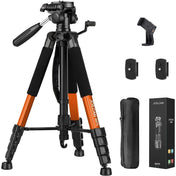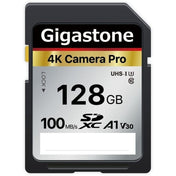In the world of photography, understanding camera specifications can be the key to unlocking your potential. Whether you're a seasoned photographer or just starting out, knowing what those complex terms mean can help you choose the right equipment for your projects. In this guide, we'll break down the most important specifications you'll encounter while shopping for cameras and lenses, making it easy to make informed decisions for your photography needs. Throughout this exploration, we’ll highlight the Canon RF-S 10-18mm lens and how it aligns with these key specifications.
1. The Importance of Camera Specifications
Before diving into the specifics, it’s essential to grasp why camera specifications matter. They provide insight into the capabilities of a camera or lens, helping you understand how they perform in various settings. Whether you're shooting in bright sunlight, low light, or fast action scenes, knowing the specifications can affect your choice dramatically.
Key Specifications to Consider
When you start exploring camera specifications, here are the main areas you'll want to focus on:
- Megapixels
- Sensor Size
- ISO Range
- Shutter Speed
- Lens Compatibility
- Focal Length
- Aperture
2. Megapixels: What’s in a Pixel?
Megapixels (MP) are often touted as a primary factor in camera quality. A megapixel is one million pixels, and it indicates the resolution of the image captured by the camera. Generally, the higher the number of megapixels, the larger the print size you can achieve without losing detail. However, more megapixels don't always equate to better image quality.
For most casual photographers, a camera with 12-20 megapixels will suffice. If you're considering a versatile lens like the Canon RF-S 10-18mm lens, which is compatible with Canon's APS-C sensor systems, you can achieve breathtaking images with just the right number of pixels.
3. Sensor Size: The Heart of Your Camera
The camera sensor is one of the most crucial components that affects your photos. It captures and converts light into an image. Sensor size can affect depth of field, low-light performance, and overall image quality. There are several types of sensor sizes:
- Full Frame: Equivalent to a 35mm film frame, offering excellent detail and low-light performance.
- APS-C: A smaller sensor, common in many DSLRs and mirrorless cameras, featuring a crop factor which affects focal lengths.
- Micro Four Thirds: The smallest of the three, size affects depth of field and low-light performance.
When using the Canon RF-S 10-18mm lens, it’s essential to understand how the APS-C sensor affects your composition. This lens provides a field of view equivalent to a 16-28mm lens on a full-frame camera, making it ideal for landscapes and architecture.
4. ISO Range: Flexibility in Various Lighting Conditions
ISO measures the sensitivity of your camera sensor to light. It allows you to take pictures in less than ideal lighting conditions. A lower ISO (100-400) is great for bright conditions, while a higher ISO (800 or above) allows you to shoot in dimmer light.
High ISO settings can introduce noise into your images, so understanding how your camera performs across various ISO ranges is key. The Canon RF-S 10-18mm lens is designed to provide excellent sharpness, particularly when used with wider apertures and lower ISO settings, ensuring your images remain vibrant even in challenging light.
5. Shutter Speed: Freezing Time
Shutter speed refers to how long the camera’s shutter remains open when you take a picture. A fast shutter speed (1/500 sec and faster) helps freeze motion, while a slower shutter speed (1/60 sec and slower) introduces a motion blur effect.
The ability to adjust shutter speed allows photographers to capture fast action without blur or to create artistic motion effects. When shooting with the Canon RF-S 10-18mm lens, you can achieve crisp shots of moving subjects even in low light by pairing it with a camera body that supports high shutter speeds.
6. Lens Compatibility and Focal Length
When purchasing any camera gear, it's vital to consider lens compatibility. Not all lenses work with every camera. Most manufacturers, like Canon, design lenses to match specific models, which is evident with the Canon RF-S 10-18mm lens. Compatible with Canon’s APS-C cameras, this lens enhances versatility and performance.
Focal length, measured in millimeters (mm), determines how zoomed-in or zoomed-out your image will be. Wide-angle lenses (like 10-18mm) are perfect for capturing expansive landscapes or architectural shots, while telephoto lenses are great for distant subjects. Understanding the relationship between your camera body and lens will allow you to maximize your creative potential.
7. Aperture: Controlling Light and Depth of Field
Aperture, defined by f-stop numbers (f/1.4, f/2.8, etc.), controls how much light enters the camera and affects the depth of field. A wider aperture (like f/2.8) allows more light in, creating a shallower depth of field; that is, it blurs the background and brings the subject into focus.
The Canon RF-S 10-18mm lens features a variable aperture, allowing for creative flexibility across various lighting conditions. When you choose a lens with a wider aperture, capturing images without flash becomes more effortless, especially in low-light scenarios.
8. Additional Features to Consider
Beyond the primary specifications, other features can enhance your photography experience:
- Image Stabilization: Reduces camera shake; beneficial for shooting at slower shutter speeds.
- Weather Sealing: Protects against the elements, essential for outdoor photographers.
- Autofocus Systems: Faster autofocus results improve the chances of capturing the perfect moment.
When selecting the Canon RF-S 10-18mm lens, look for additional features such as optical stabilization that can greatly enhance the clarity of handheld shots, making this lens very forgiving, especially for beginners.
9. Putting It All Together: Choosing the Right Equipment
With all this knowledge under your belt, the next logical step is figuring out how to choose the right camera and lens combination. The key is determining your photography style and the specific requirements of your projects.
Identifying Your Photography Style
Are you interested in landscape photography, portrait work, or sports? Your answer will guide you in selecting the right specifications. Strong consideration should be given to focal length, aperture, and sensor size based on what you plan to capture.
Budget Matters
Photography gear can vary massively in price. Creating a budget can help you narrow down options without compromising on quality. Remember that while the Canon RF-S 10-18mm lens is reasonably priced in comparison to other lenses, it still offers excellent performance and flexibility for various conditions.
Your Journey Awaits
As we have explored, the intricacies of camera specifications might seem daunting at first, yet they are essential for elevating your photography game. Each specification impacts how you capture images, and understanding them can lead to incredible results. Keep this guide close as you navigate the exciting journey of photography. With your newfound knowledge, you're empowered to make informed choices, whether it’s a new camera or a versatile lens like the Canon RF-S 10-18mm lens.
Armed with these insights, you're ready to embrace the world of photography with confidence and creativity. Photography isn't just about technical specifications; it's also about passion and expression. Now that you understand the lingo, step out and start capturing the beauty all around you! Your perfect shot is just a click away!
Explore another user's Shopify store by clicking here. Please note that this is a promotional link, and we assume no responsibility for the content on the linked store.












